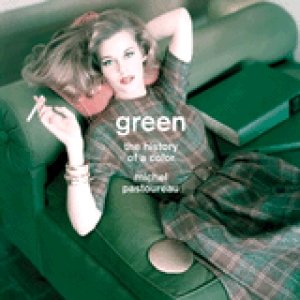Beskrivelse
In this beautiful and richly illustrated book, the acclaimed author of Blue and Black presents a fascinating and revealing history of the color green in European societies from prehistoric times to today. Examining the evolving place of green in art, clothes, literature, religion, science, and everyday life, Michel Pastoureau traces how culture has profoundly changed the perception and meaning of the color over millennia—and how we misread cultural, social, and art history when we assume that colors have always signified what they do today.
Filled with entertaining and enlightening anecdotes, Green shows that the color has been ambivalent: a symbol of life, luck, and hope, but also disorder, greed, poison, and the devil. Chemically unstable, green pigments were long difficult to produce and even harder to fix. Not surprisingly, the color has been associated with all that is changeable and fleeting: childhood, love, and money. Only in the Romantic period did green definitively become the color of nature.
Pastoureau also explains why the color was connected with the Roman emperor Nero, how it became the color of Islam, why Goethe believed it was the color of the middle class, why some nineteenth-century scholars speculated that the ancient Greeks couldn’t see green, and how the color was denigrated by Kandinsky and the Bauhaus.
More broadly, Green demonstrates that the history of the color is, to a large degree, one of dramatic reversal: long absent, ignored, or rejected, green today has become a ubiquitous and soothing presence as the symbol of environmental causes and the mission to save the planet.
With its striking design and compelling text, Green will delight anyone who is interested in history, culture, art, fashion, or media.
Michel Pastoureau is a historian and director of studies at the École Pratique des Hautes Études de la Sorbonne in Paris. A specialist in the history of colors, symbols, and heraldry, he is the author of many books, including Blue and Black (both Princeton) and The Devil’s Cloth: A History of Stripes. His books have been translated into more than thirty languages.
"[S]umptuously illustrated. . . . These are books to look at, but they are also books to read. . . . Individual colors find their being only in relation to each other, and their cultural force depends on the particular instance of their use. They have no separate life or essential meaning. They have been made to mean, and in these volumes that human endeavor has found its historian."–Michael Gorra, New York Review of Books
"Pastoureau's engaging cultural history of the color green tackles art history and color theory. . . . With the look and feel of an artbook, this book holds equal amounts of substance of in the text. . . . His anecdotes are insightful, the references occasionally delightfully esoteric. . . . [H]e gives this substantial discussion further contemporary relevance."–Publishers Weekly
"Beautifully illustrated."–Daily Mail
"From the ample green gown in Jan van Eyck's painting "The Arnolfini Wedding" to the chartreuse and shamrock in Paolo Veronese's work, from Paul Cezanne's apples to Kees van Dongen's Fauvist use of mint and jungle greens, there's much to sink your eyes into."–Mary Louise Schumacher, Milwaukee Journal Sentinel
"As this beautifully illustrated work shows, the 'uneasiness' of being green is what makes its story so interesting."–Fiona Capp, Sydney Morning Herald
"[C]easelessly fascinating and erudite."–Michael Glover, Independent




